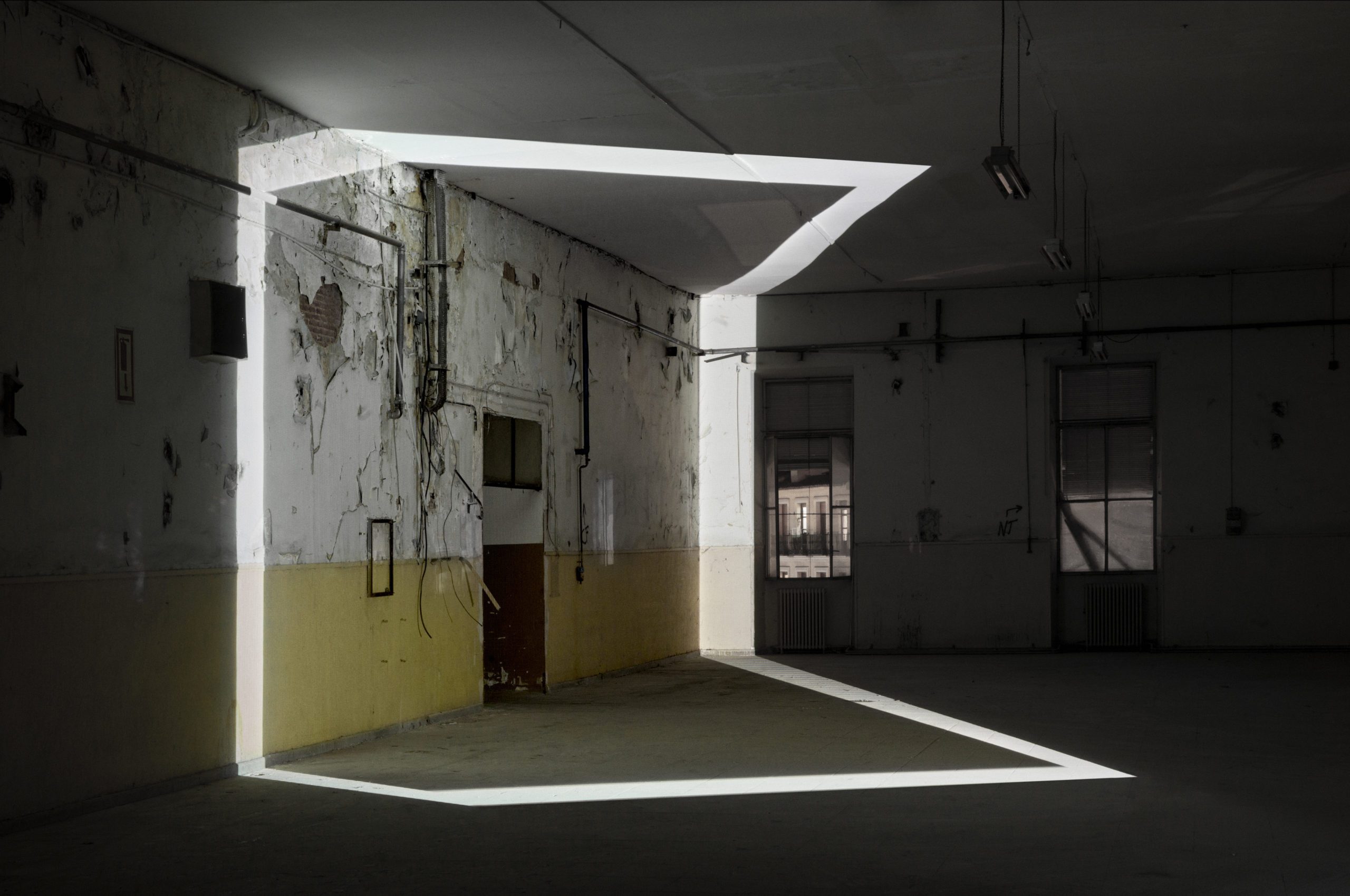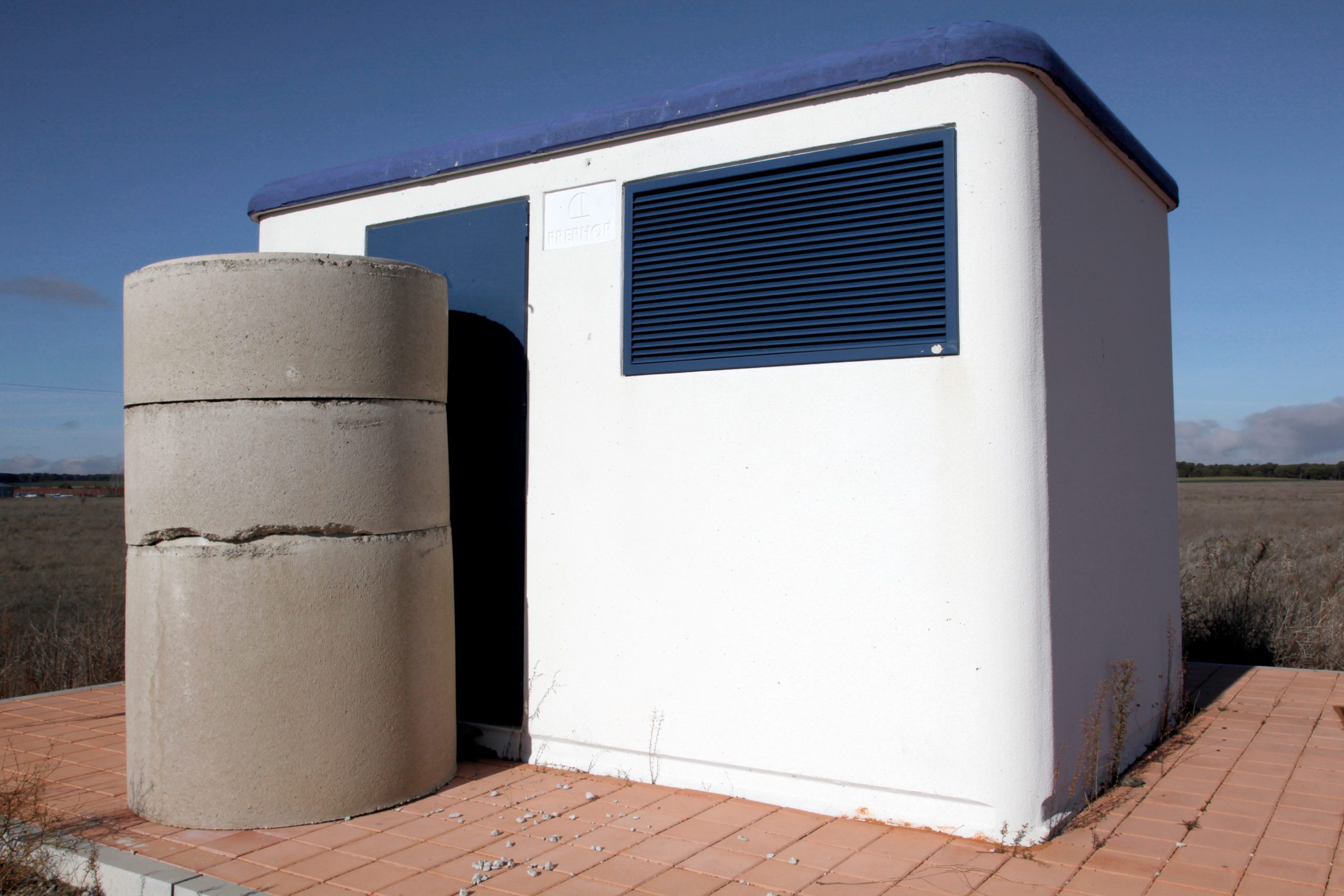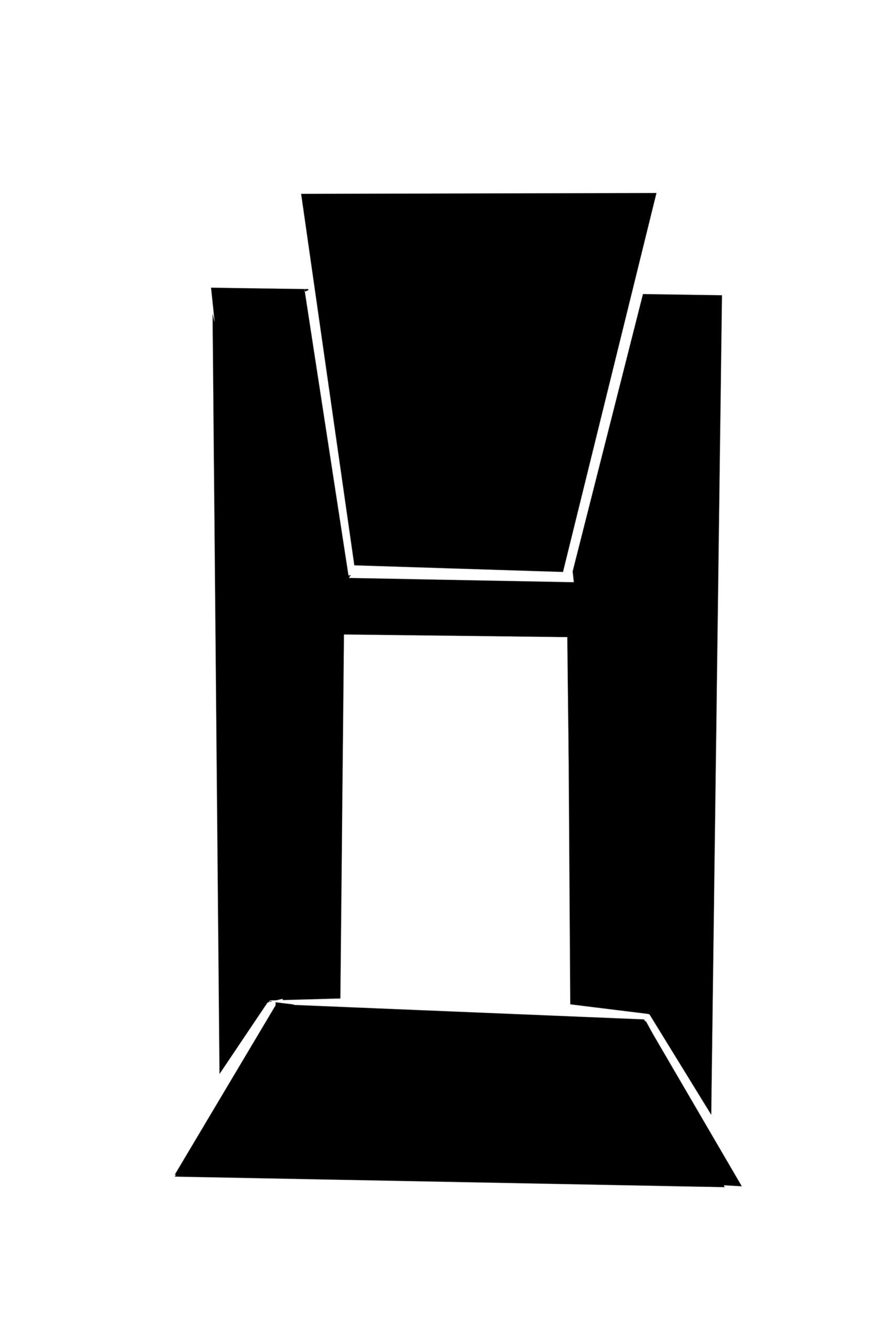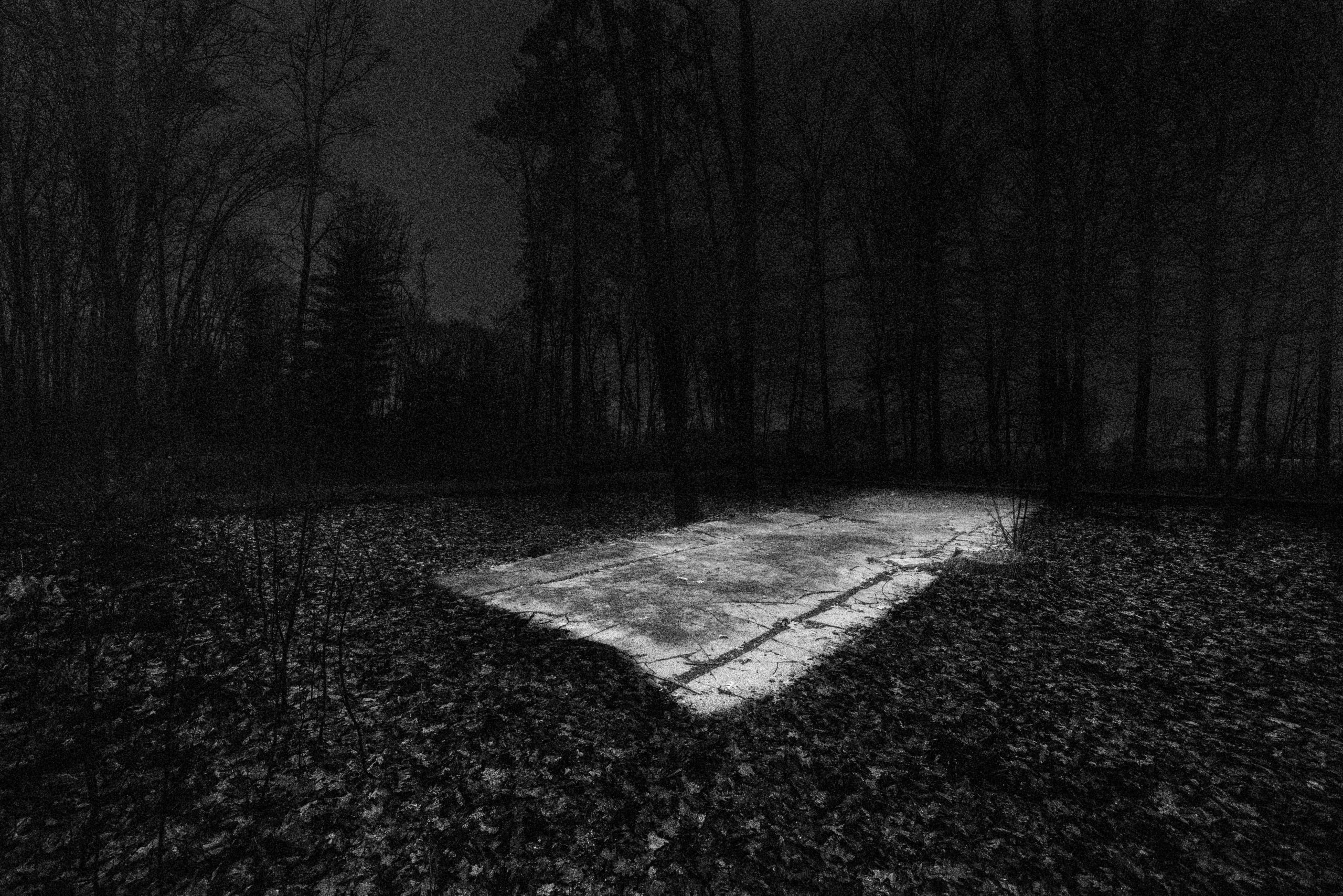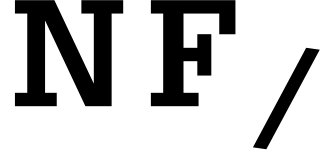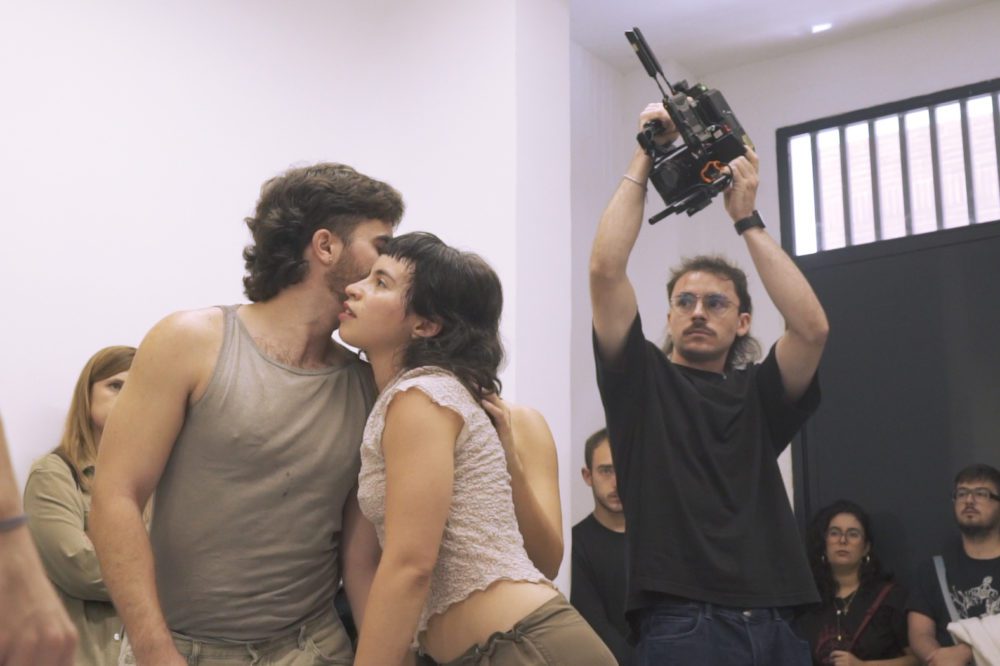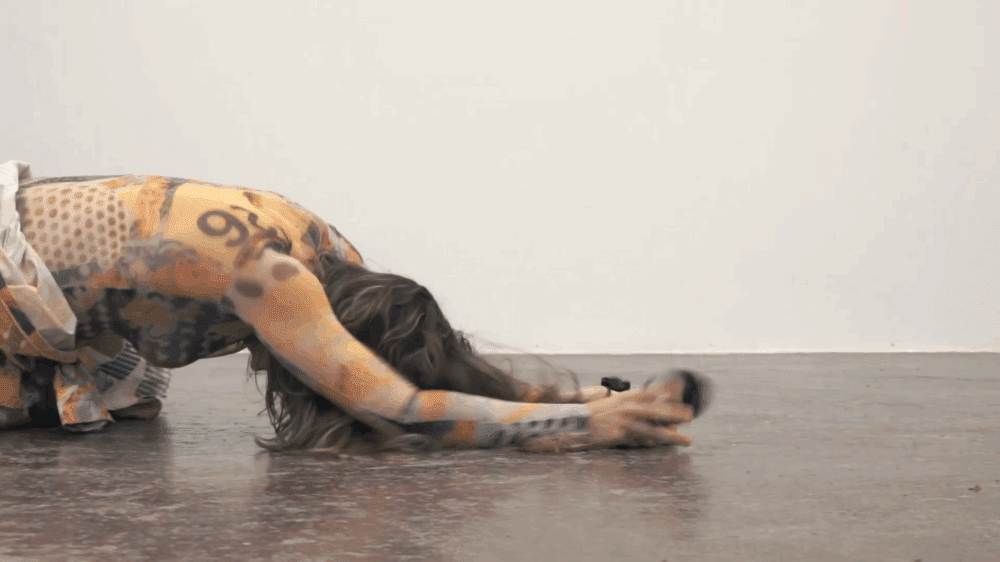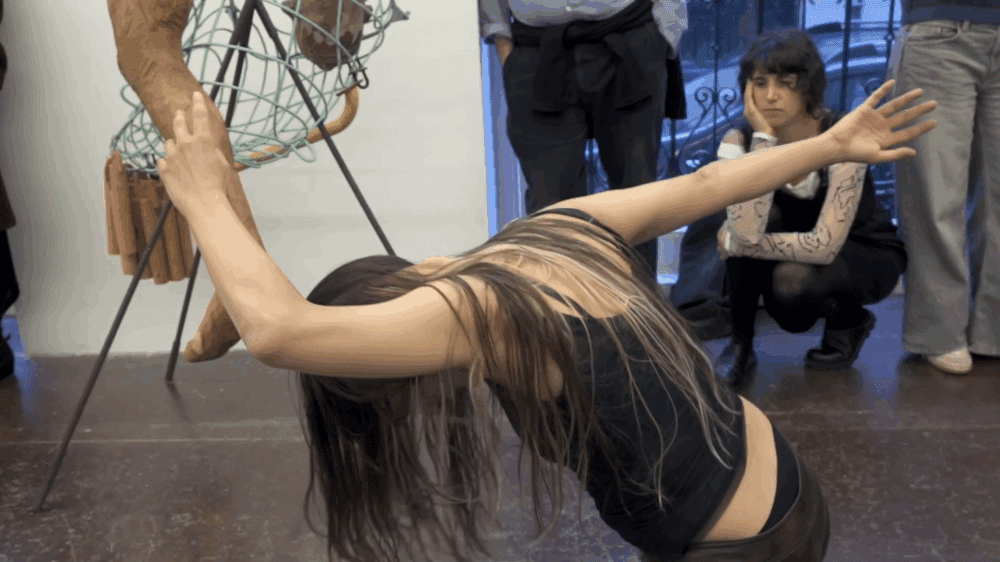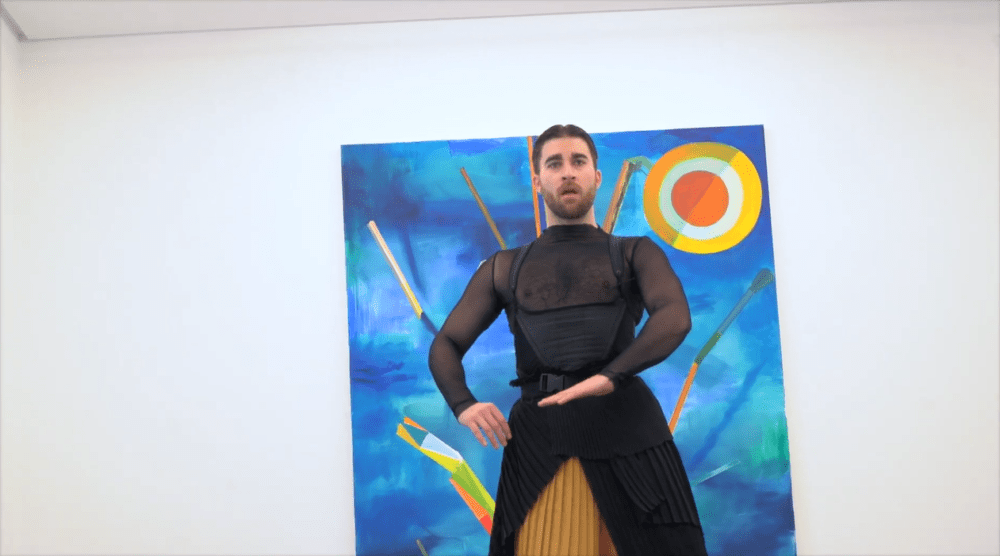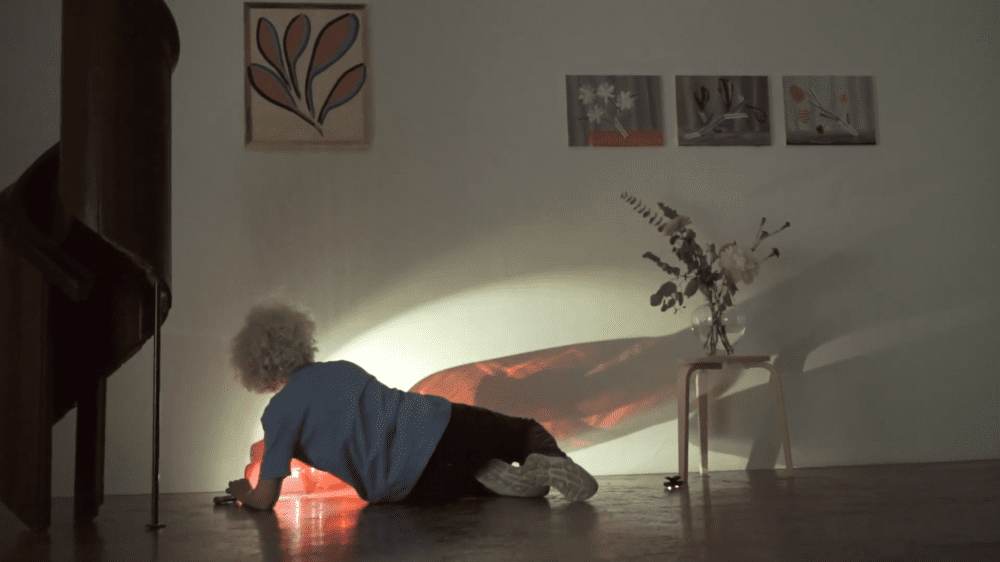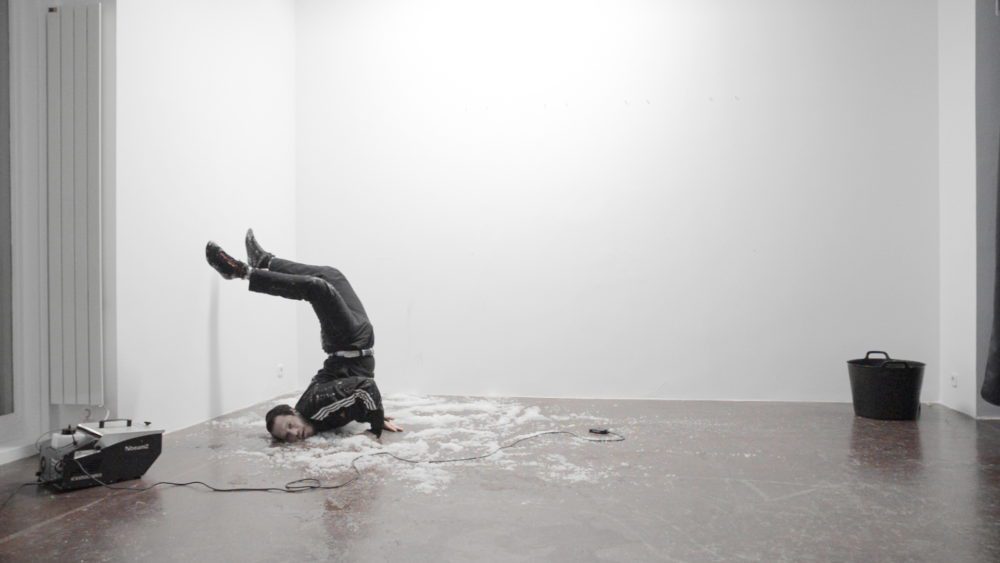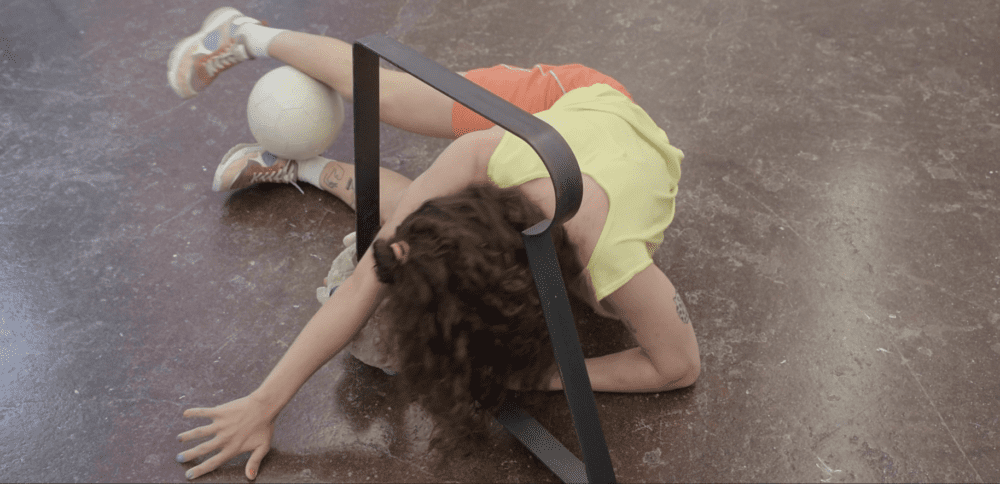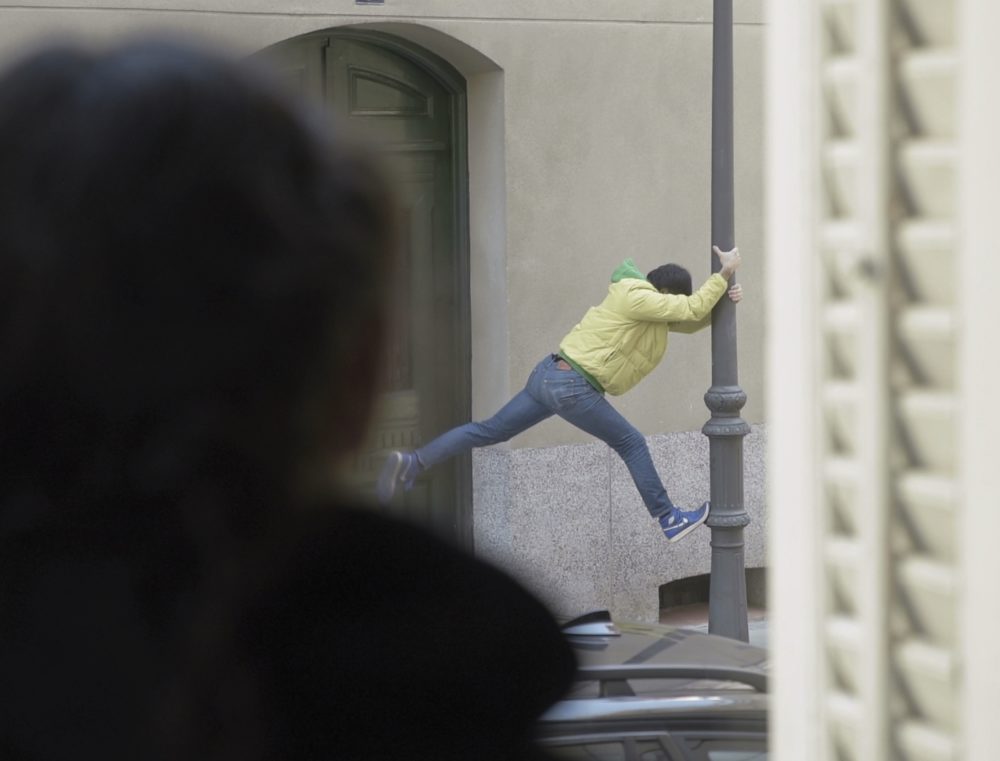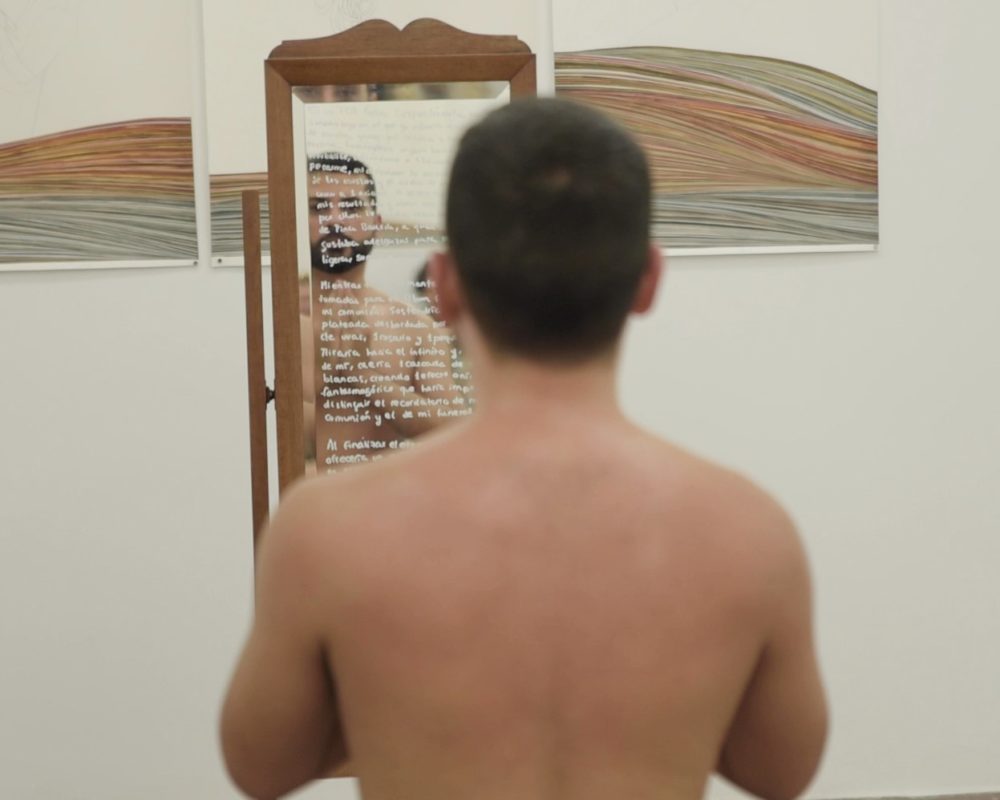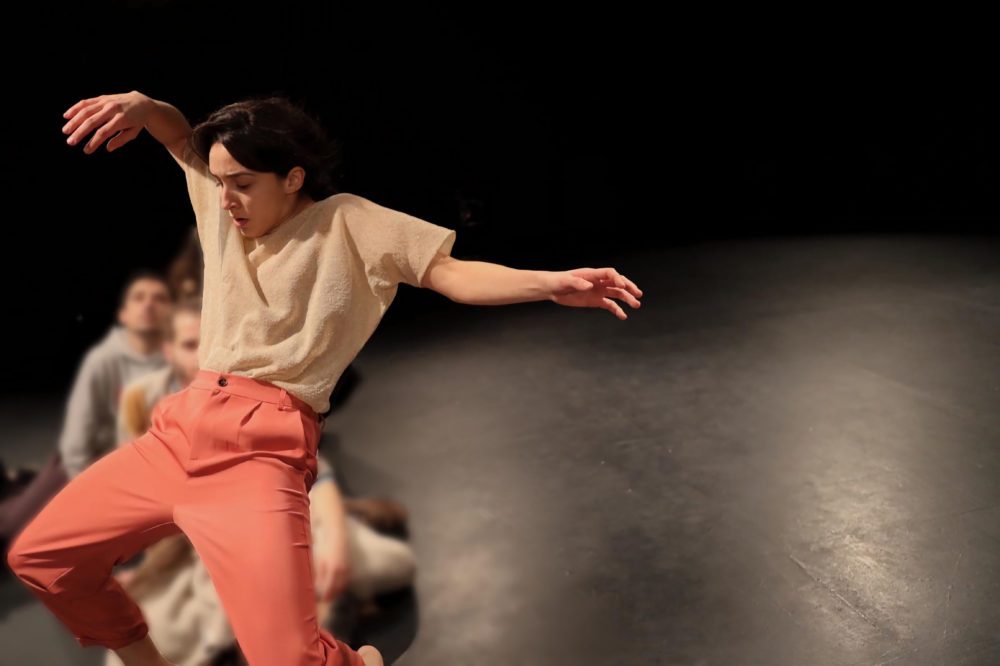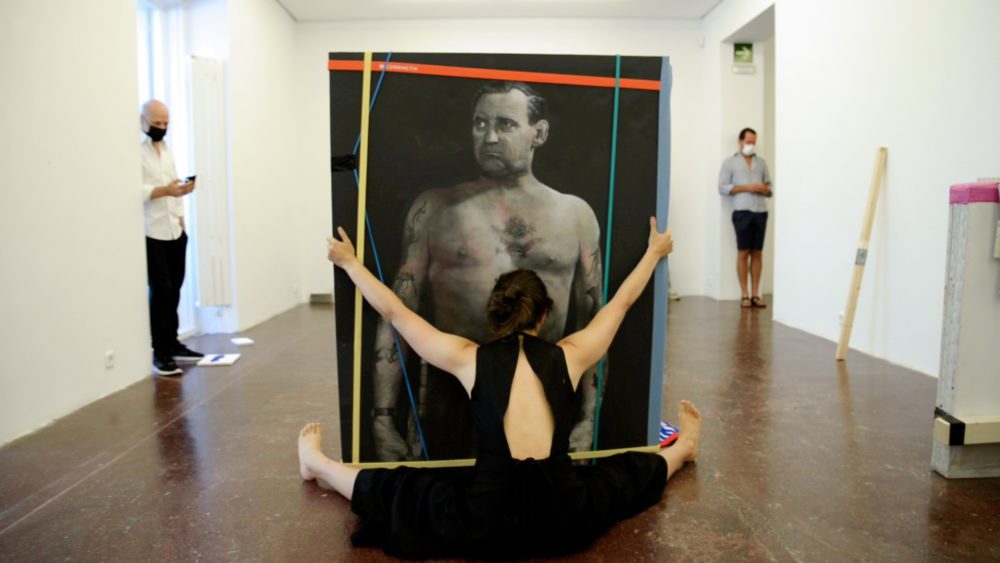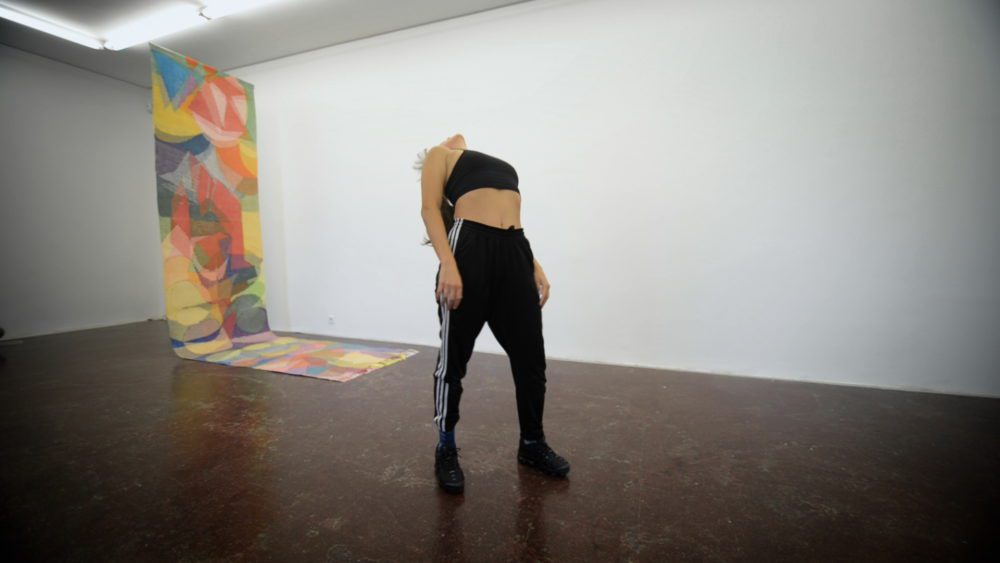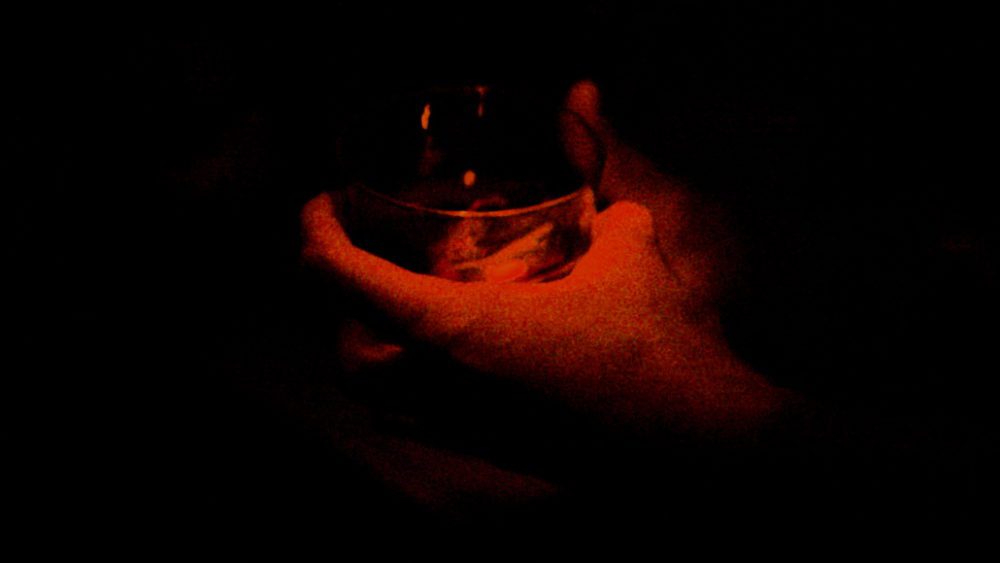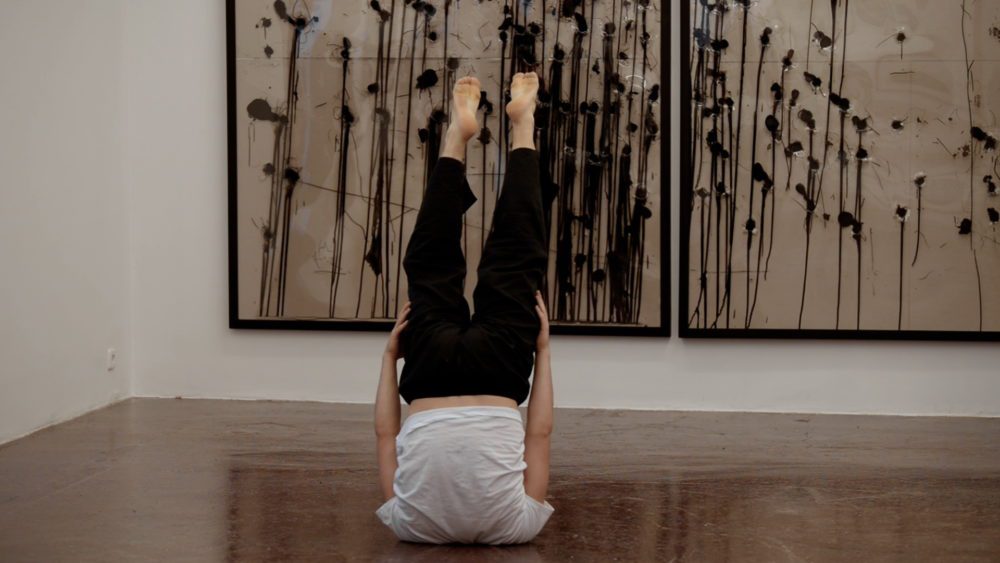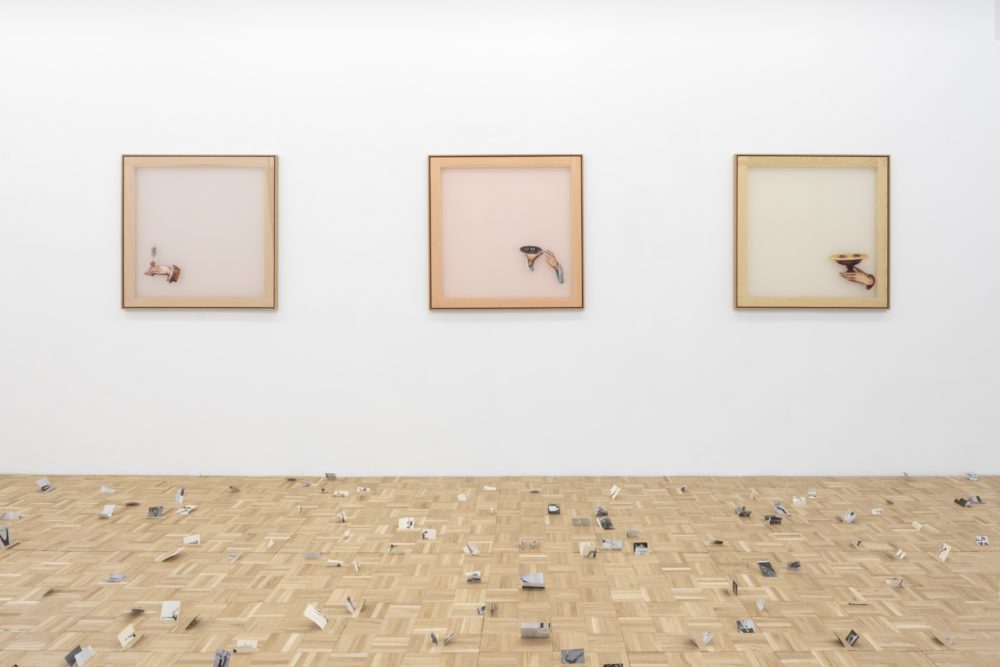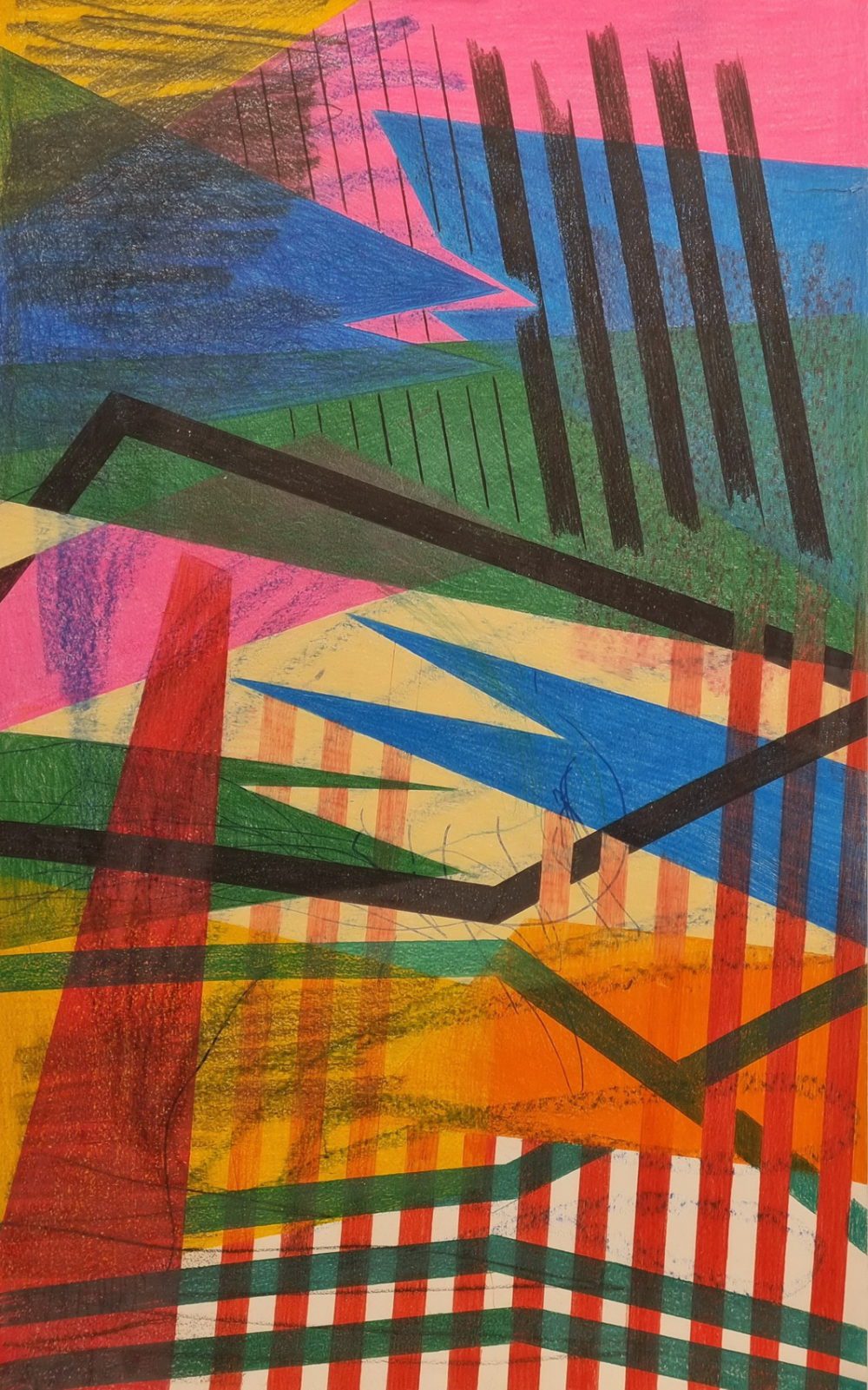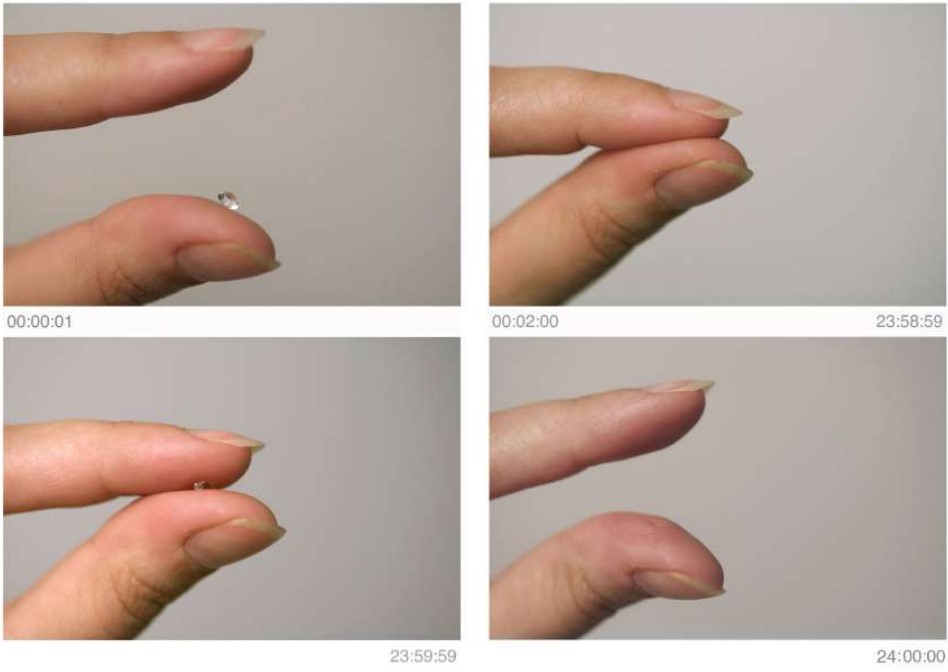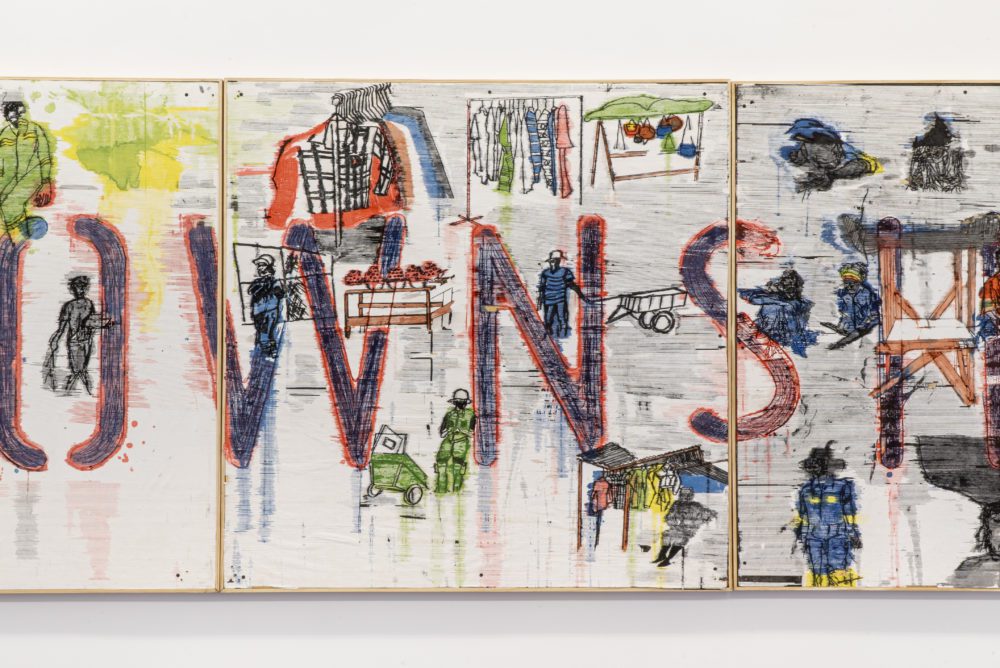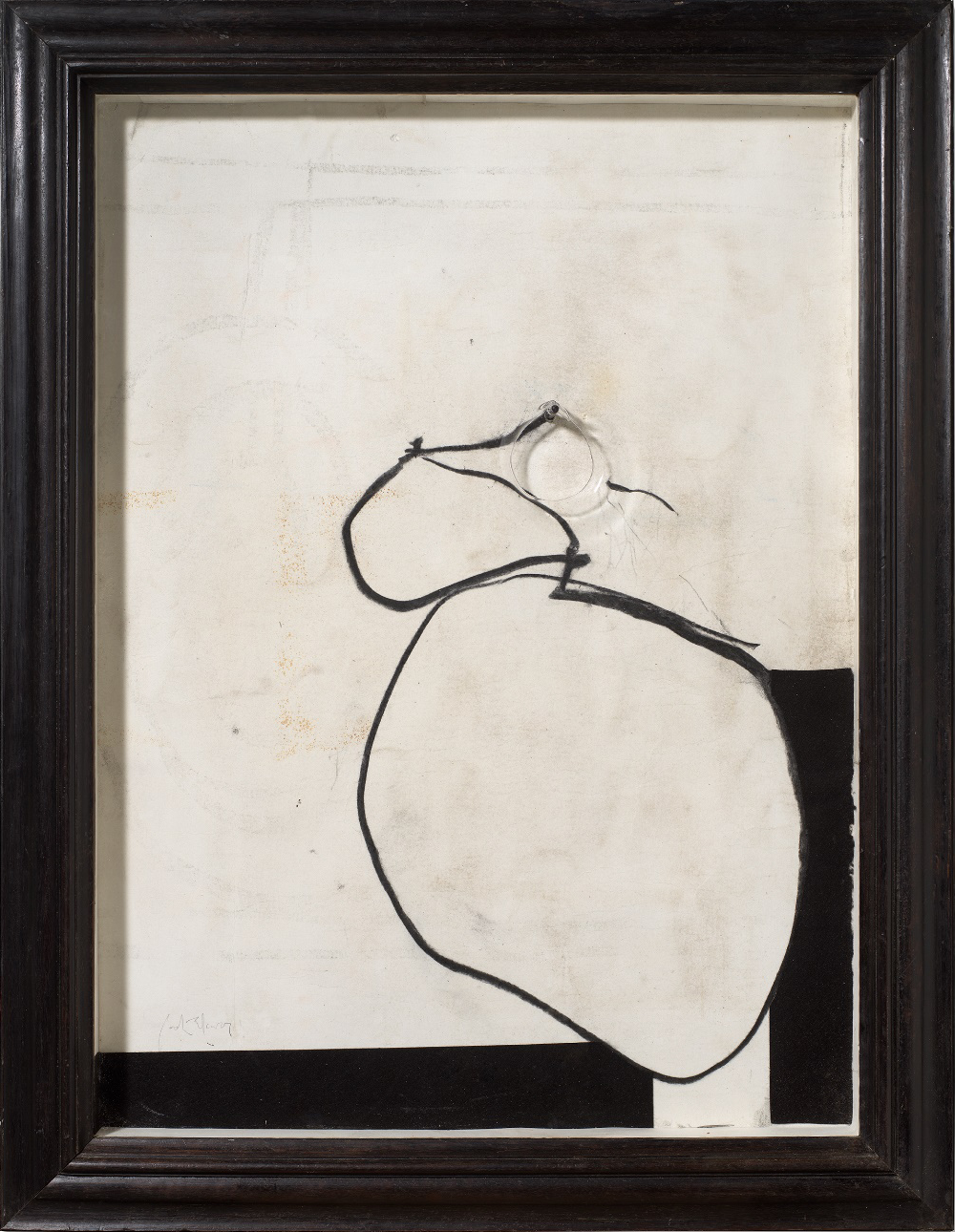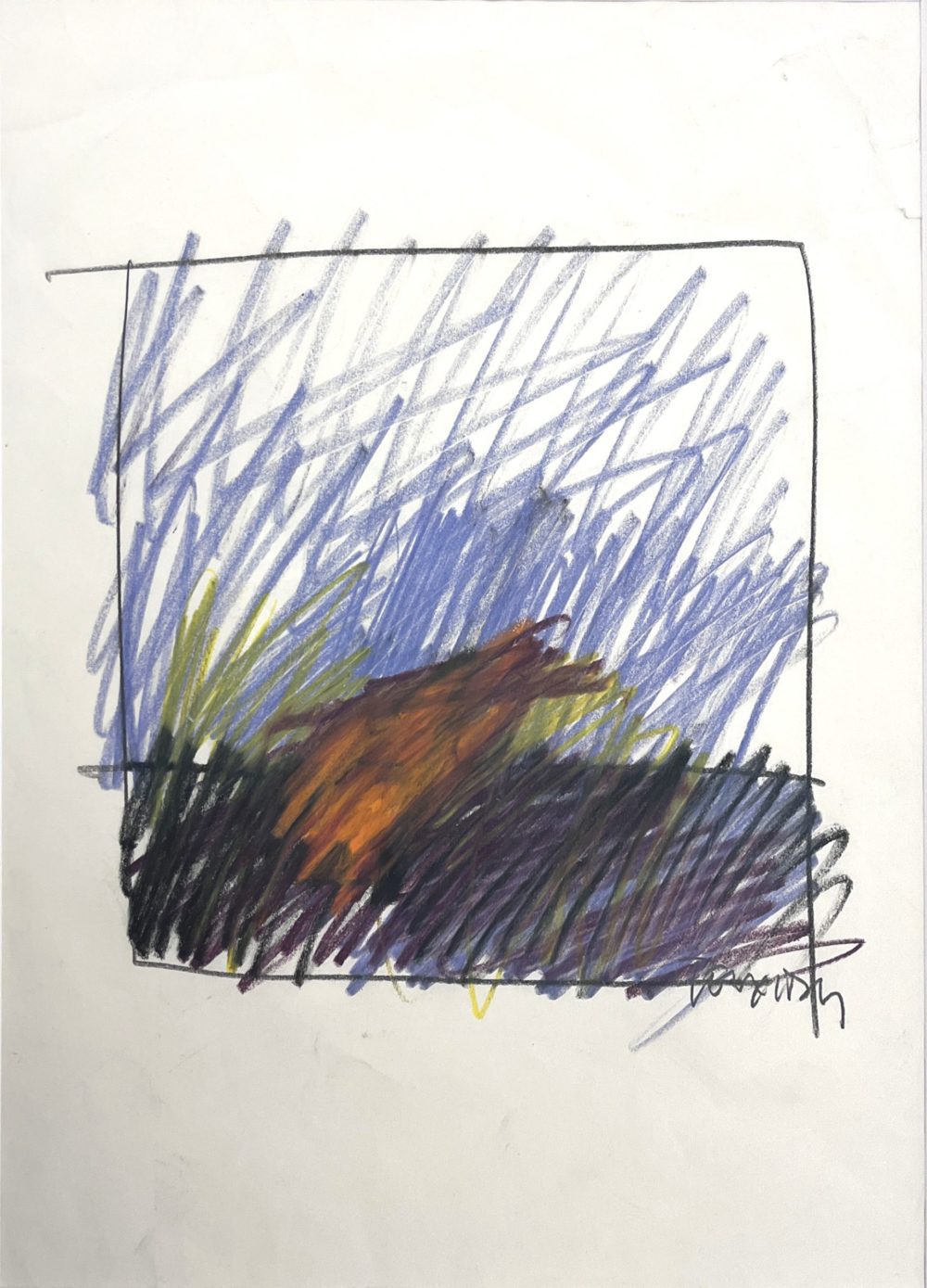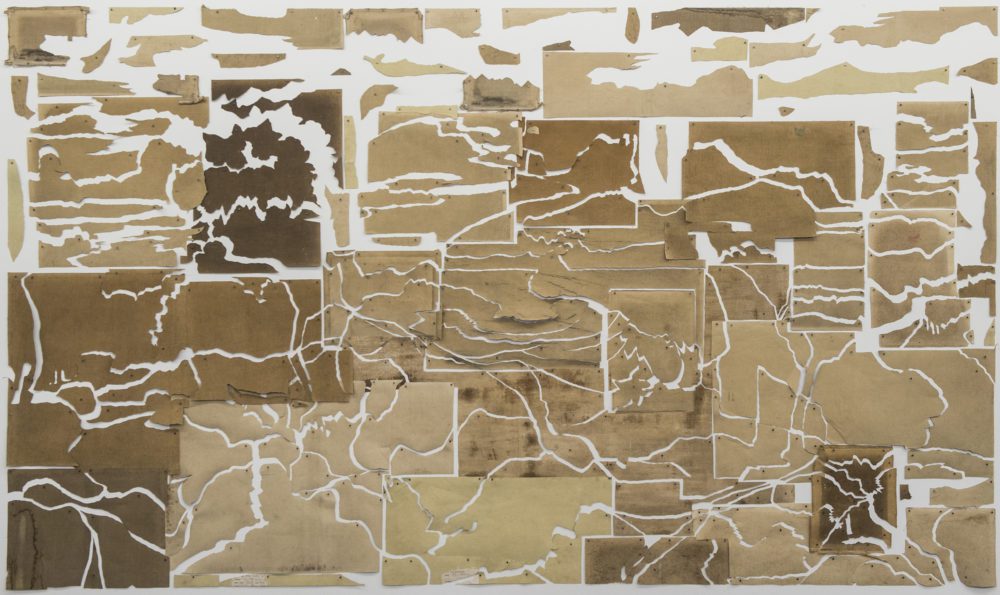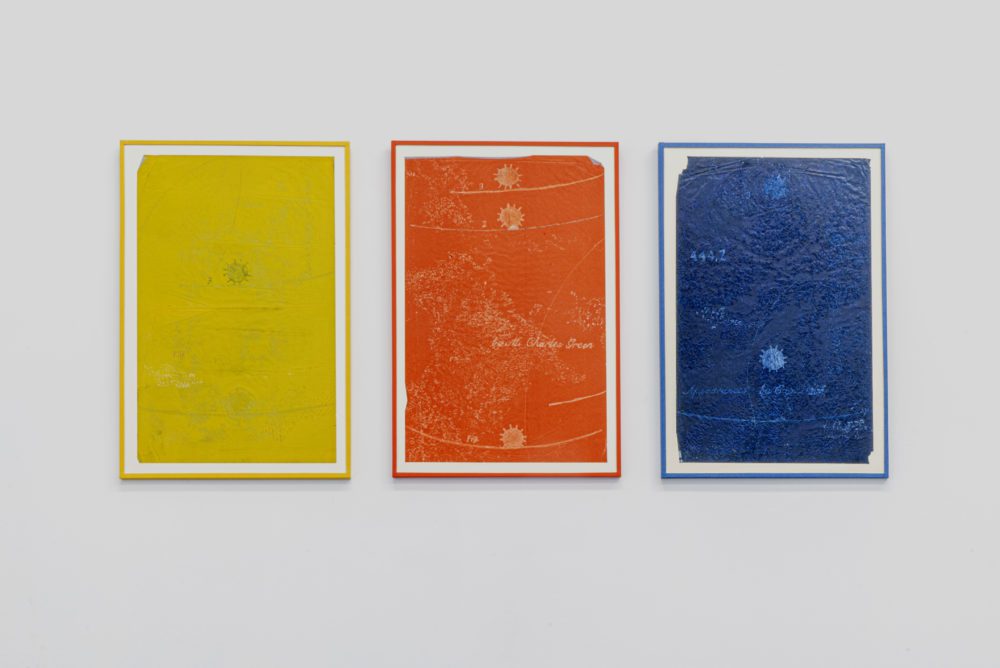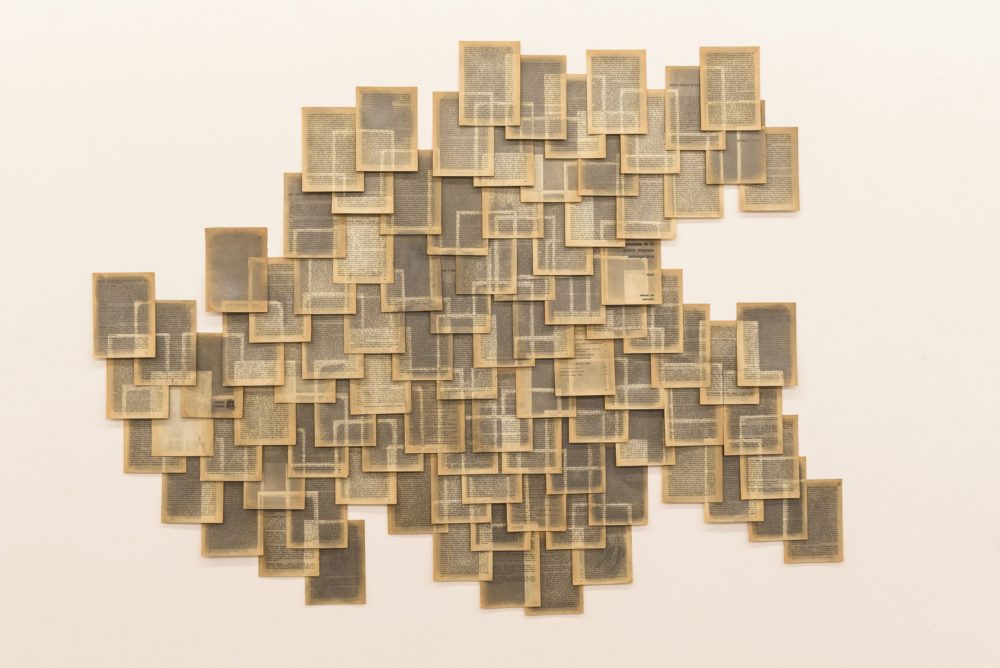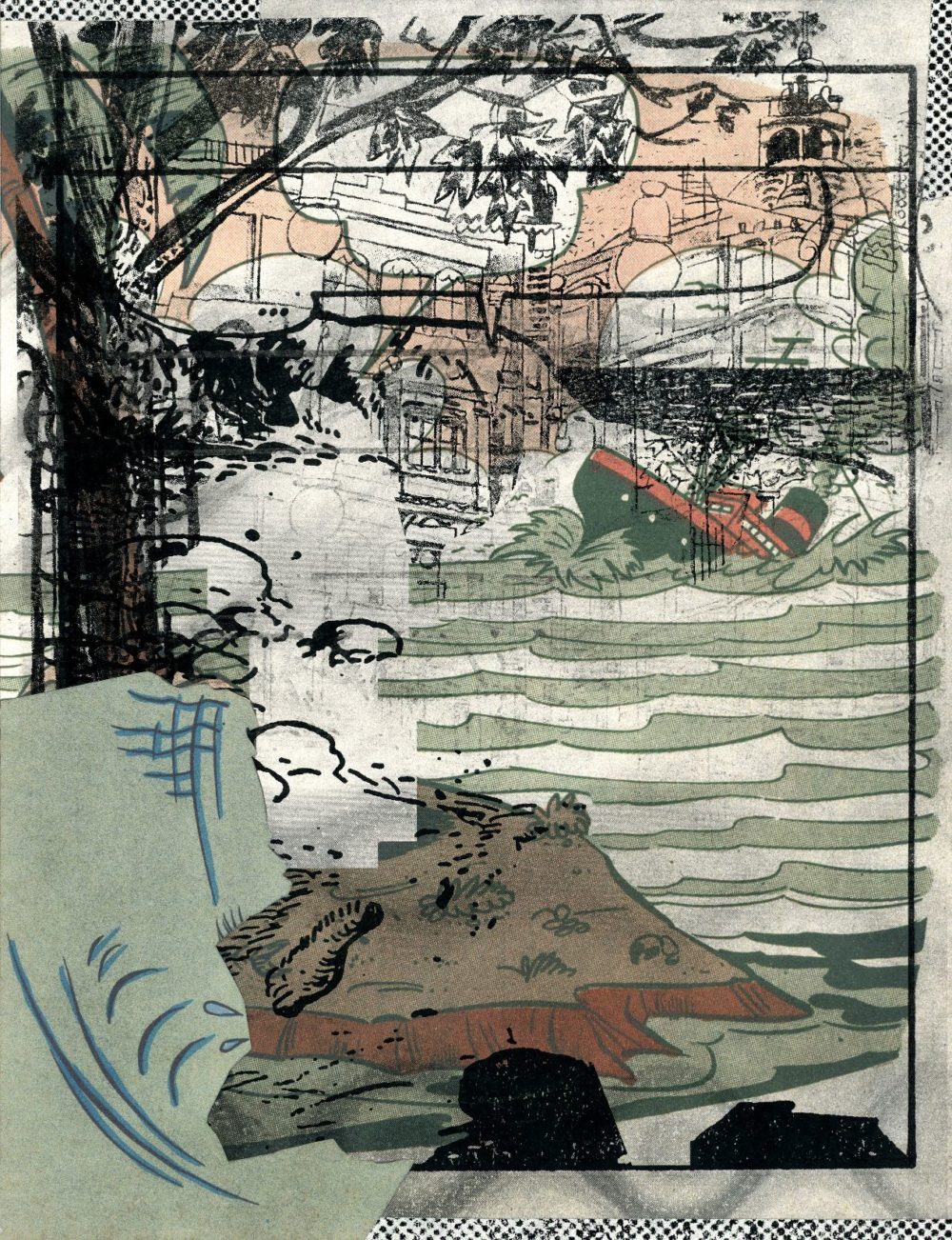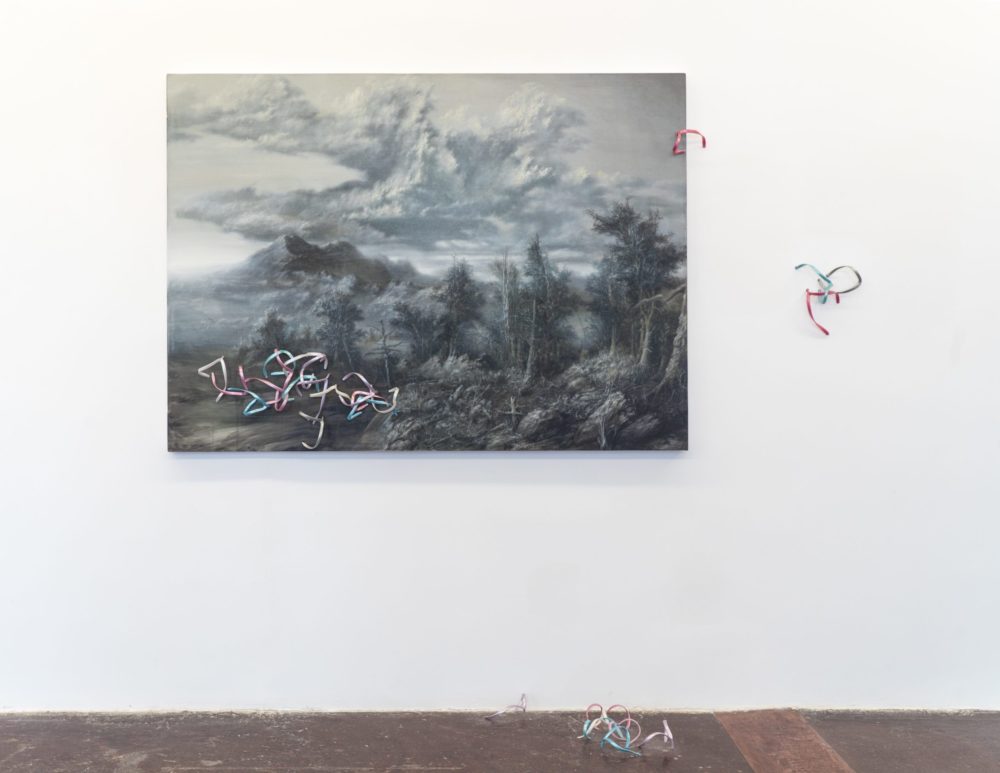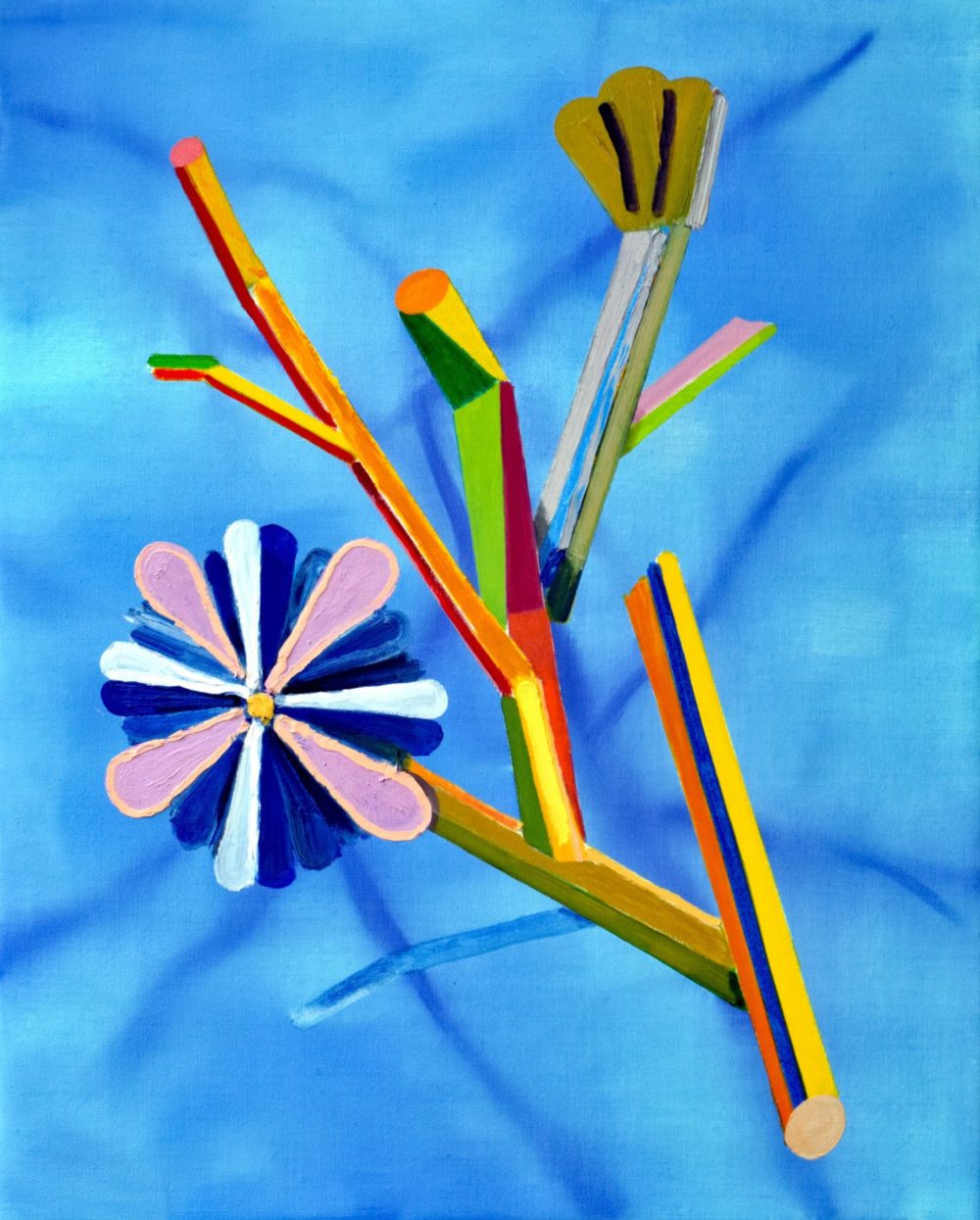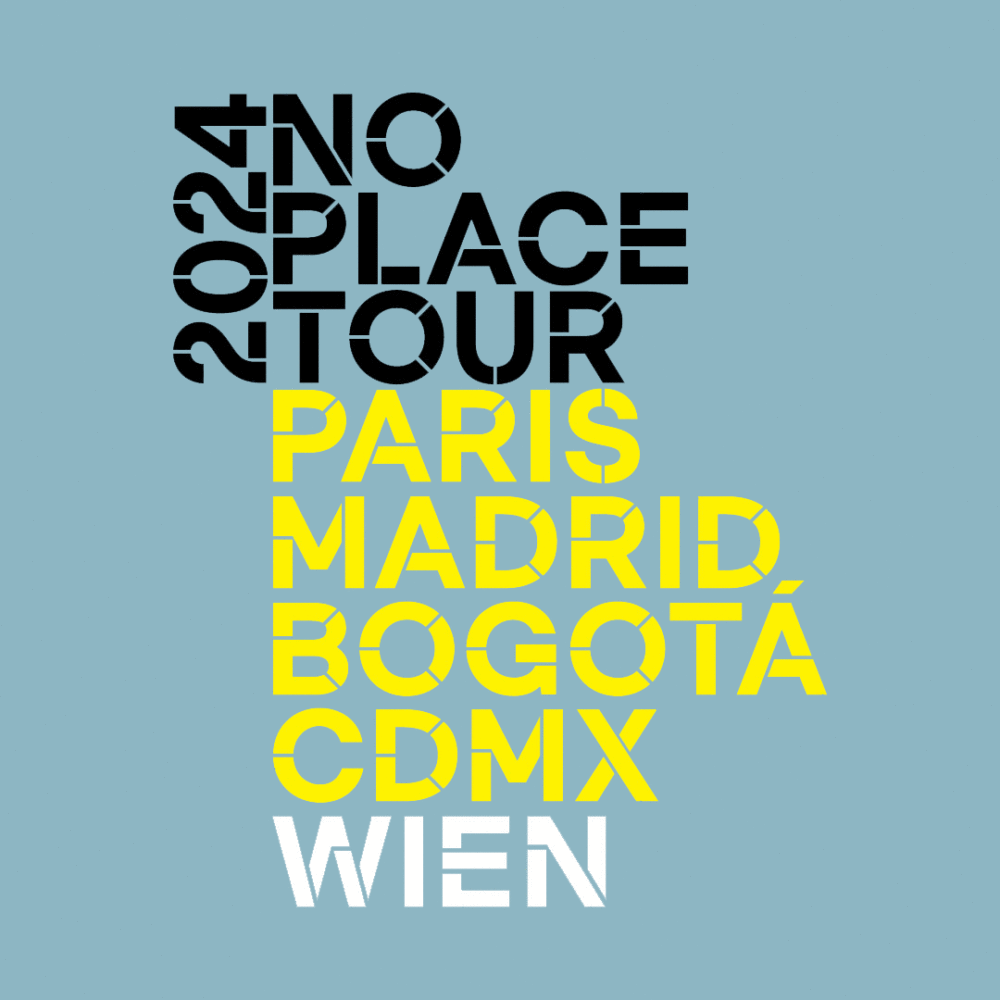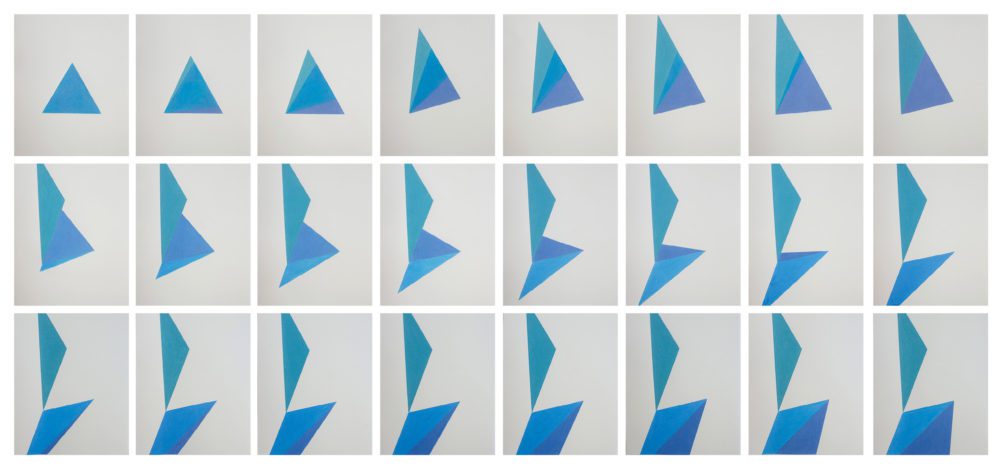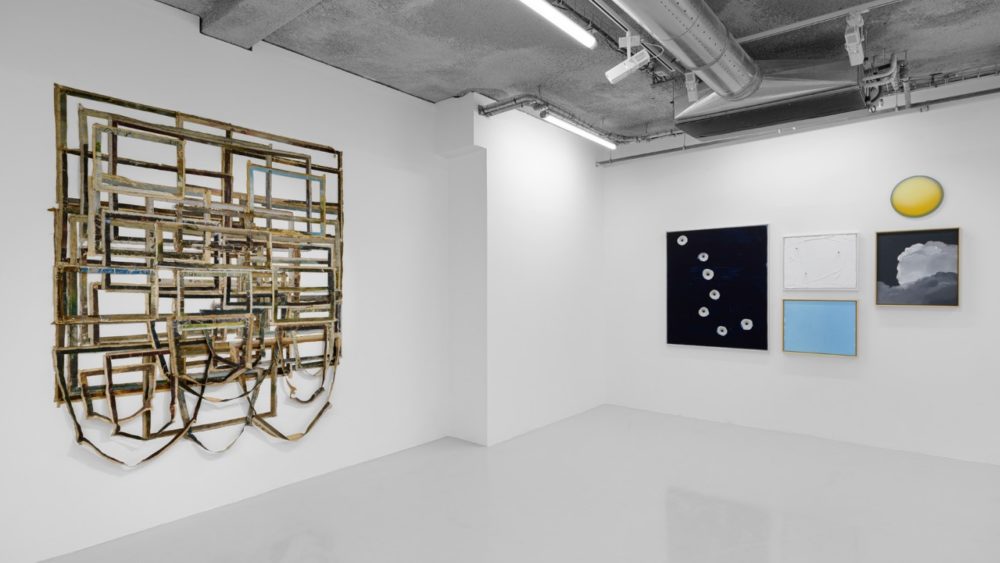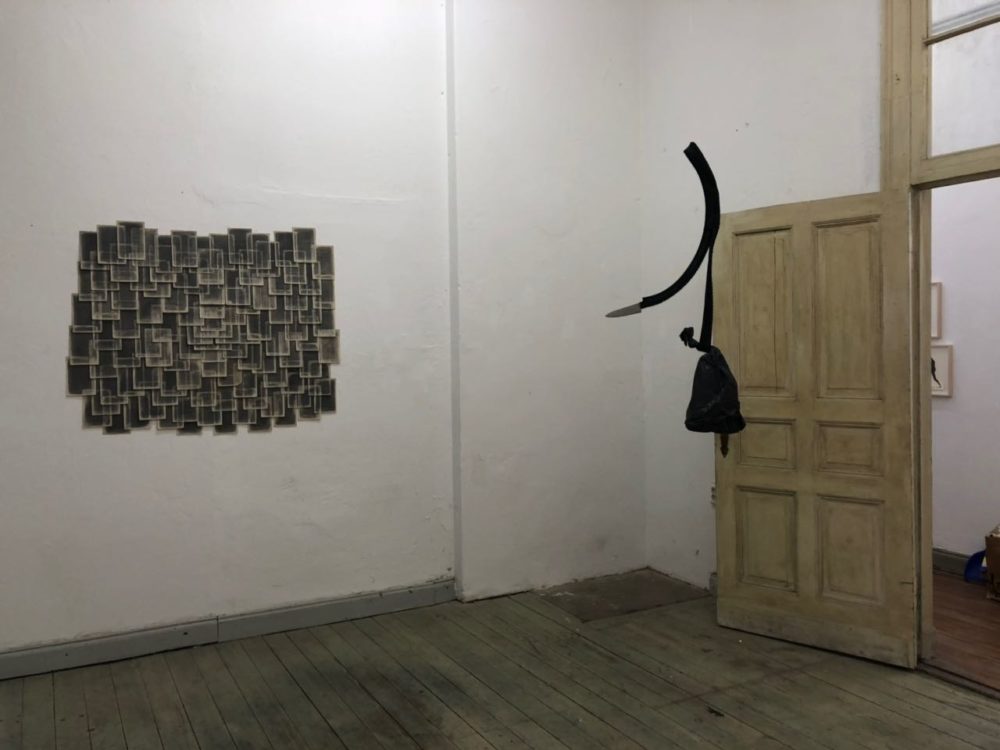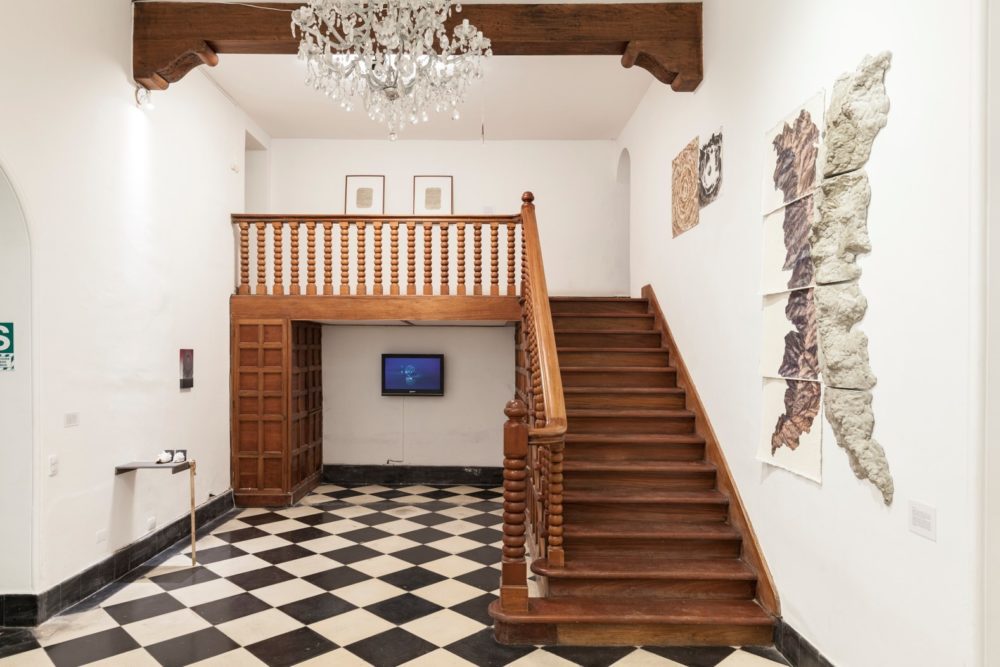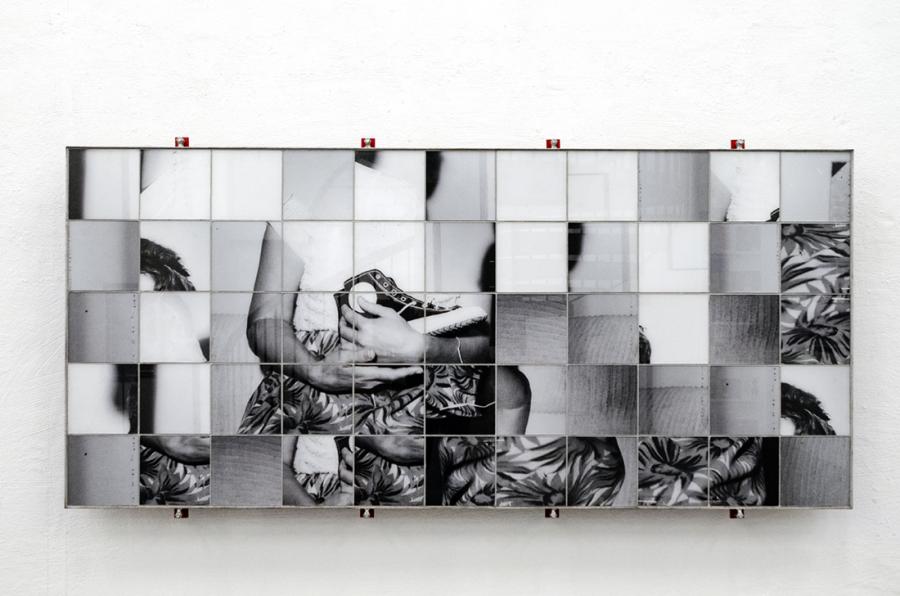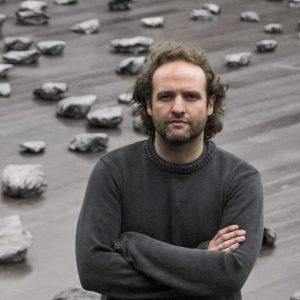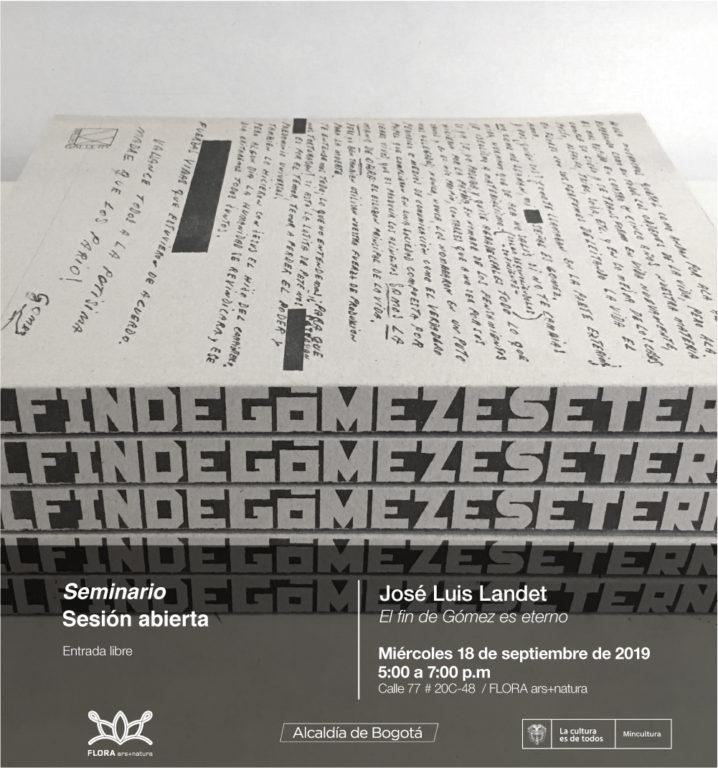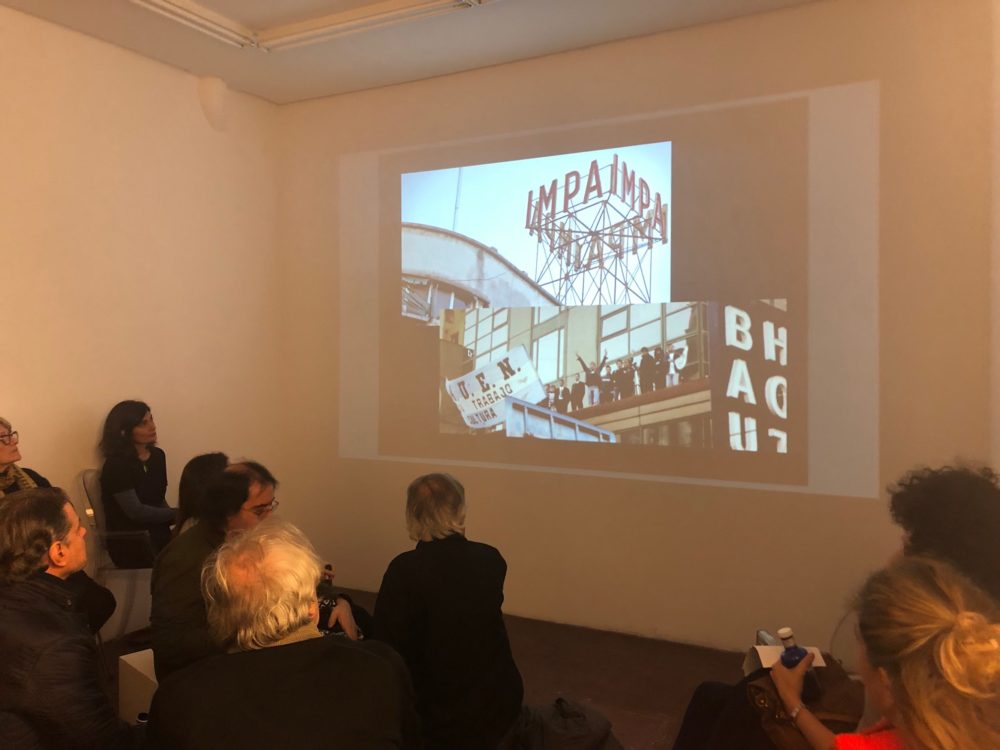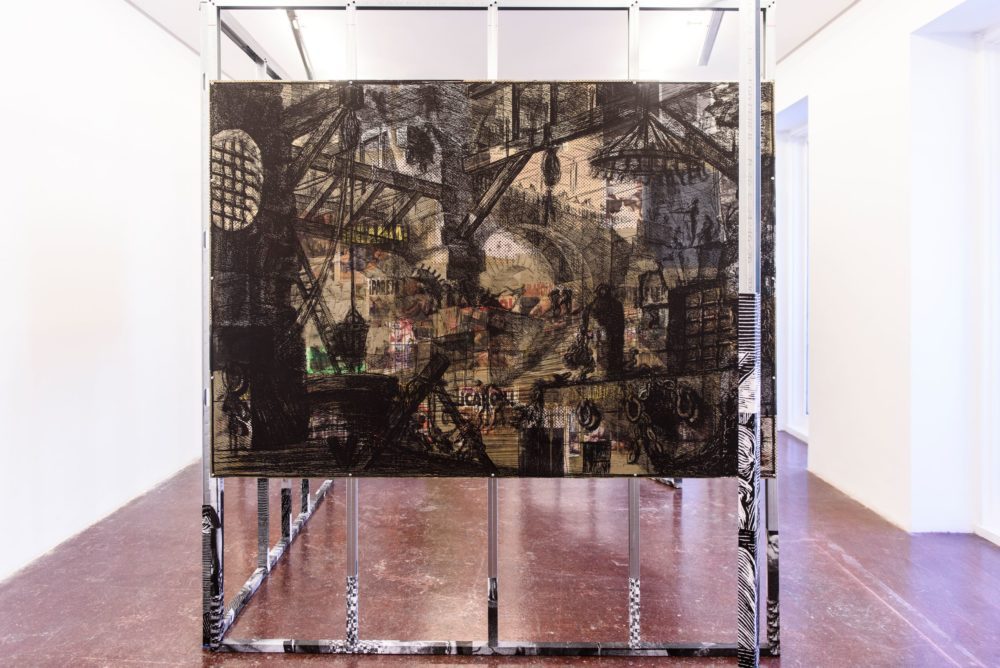Exposición /
NICOLAS COMBARRO. QUAD. AL FONDO, A LA IZQUIERDA+DatesInfo
The work of Nicolás Combarro is grounded in insistent attempt, in continuous exercise, in repeated and documented action. In the transversal selection drawn from several of his series for this episode of Interludios, this insistence concentrates on a single form in order to unfold multiple approaches to a constant.
Within the catalogue of images that the artist produces and draws from, this exhibitionary conversation is founded on a square, a rectangle, two triangles set in opposition so as to once again form a four-sided composition… Fields of color, measuring lines, geometries—forms that develop against a continuous ground.
The assault on form—its pursuit, composition, and decomposition—makes it possible to traverse those grounds. Grounds that are specific landscapes the artist actively seeks out. He searches for them, or they emerge to meet him, as happens to a trained and attentive eye. While the forms evoke art-historical references that oscillate between three-dimensionality and two-dimensionality—from El Lissitzky and Schwitters to Kounellis or Miguel Ángel Campano—the grounds are tied to a particular stance toward what has been abandoned, set aside, concealed, or forgotten: a political vision of recovery, recognition, revaluation, and restoration. Form as a squared position.
The ground surges forward and resonates as the primary plane, as the artistic action documented in the images. Works from the series Línea, Línea de sombra, Arquitectura espontánea, Desvelar/desplazar, Sotterranei, and La materia del silencio generate—through the actions undertaken and through pictorial, sculptural, or luminous movement—staged interventions: whether in industrial buildings, abandoned structures, creations at the limits of the imaginable, concealed foundations, or architectures of repression erased from collective memory.
In his analysis of aesthetic observation—a text that asks why we look at something beyond its beauty—Paul Ziff refers to the piece Samuel Beckett made for television in 1981, Quad: “Modern works of art often require prolonged and continuous attention in order to be appreciated. The same is true of an alligator basking in the sun on the muddy bank of a swamp. Everything that is observed demands something in return”[i]. Beckett’s exercise was likewise structured around a square, with four characters traversing it in a sequence of cadences. A “ballet for four people,” in which each follows a specific movement and rhythm, always avoiding contact with one another and with the central area, which he terms the “danger zone.”
Now, from within this “danger zone,” carefully observing the trajectories Combarro traces in each work makes it possible to reveal that ground.
Marta Ramos-Yzquierdo
[1] Ziff, P. (1984). Anything Viewed. In: Antiaesthetics. An Appreciation of the Cow with the Subtile Nose. Synthese Library, vol 174. Springer, Dordrecht.
___________________________________________________
___________________________________________________
Nicolás Combarro
ST. Desvelar, desplazar IV (proyección de trapecio blanco)
2017
Color photography. Inkjet on Hahnemühle paper
125 x 160 cm
Ed. 1/7
Nicolás Combarro
ST. SNIUR (Pirámide Caio Cestio, Roma)
2025
Collage and black ink drawing on photograph. Pigment ink print on Hahnemühle paper
43 x 30 cm
Ed. 1/5
Nicolás Combarro
ST. Arquitectura Espontánea (fotografía II)
2017
Color photography. Inkjet print on Hahnemühle paper
30 x 43 cm
Ed. 1/7
Nicolás Combarro
ST. Etruschi (tumba etrusca I)
Acrylic on cotton paper
43 x 30 cm
Unique
Nicolás Combarro
ST. La materia del silencio (campo internamiento de Gurs)
2024
B&W photography. Inkjet print on Hahnemühle paper
110 x 165 cm
Ed. 1/3
18.12.2025 - 06.02.2026
Projects /
CAMPING
Sabemos del poder del arte por su capacidad para convocar y aglutinar a públicos diversos dispuestos a cuestionar sus valores, acciones, creencias y decisiones.
Sabemos también que los tiempos que corren demandan redefinir el valor del arte y la cultura pero que no seremos capaces de hacerlo sin crear entornos en los que sea posible compartir compromisos entre las personas interesadas.
Con la ambición de ser más relevantes, permeables y participativos hemos creado CAMPING, una iniciativa que abrirá el espacio de la galería NF/ NIEVES FERNANDEZ a diversos actores culturales, con el fin de que puedan desarrollar y exhibir sus proyectos y creaciones libremente. Tomando como soporte de sus acciones el espacio expositivo, los diversos actores desplegarán sus proyectos temporales interactuando con la exposición instalada en ese momento en la galería.
Con este proyecto, CAMPING ofrece un encuentro entre los creadores y el público quienes acamparán tomando la galería como un paisaje privilegiado en el que disfrutar de un periodo de reflexión y convivencia alejado de las estridencias del mundo exterior.
CAMPING es un proyecto de Nerea e Idoia Fernández, directoras de NF/NIEVES FERNANDEZ y de Blanca Cortés, abogada especializada en propiedad intelectual.
News /
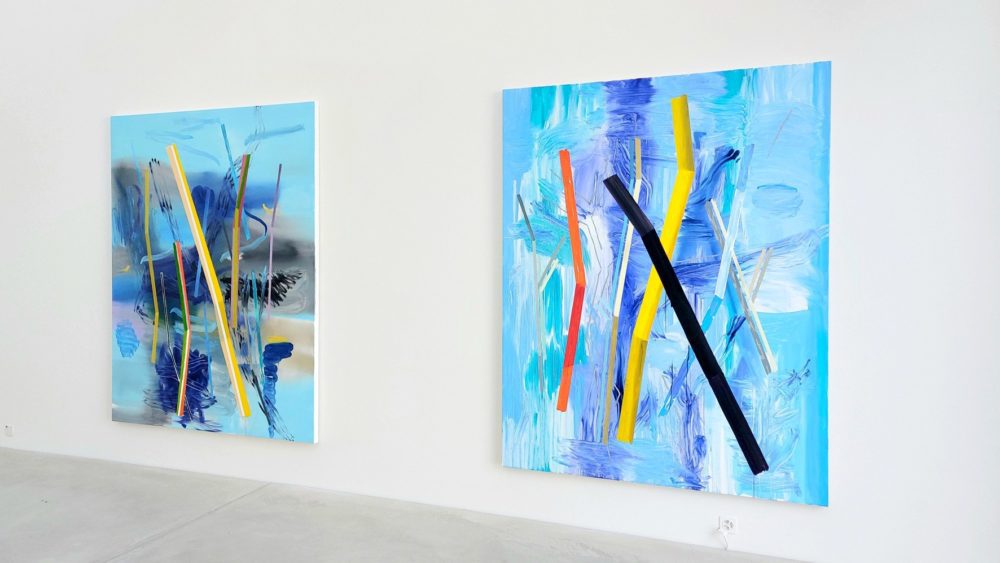 Rafael Grassi. "Dezemberausstellung: Überblick 2025". Kunst Museum Winterthur
Rafael Grassi. "Dezemberausstellung: Überblick 2025". Kunst Museum WinterthurArtists: Georg Aerni, Lyn Bentschik, bittelangsam, Dave Bopp, Céline Brunko, Christoph Eisenring, Gregor Frehner, Duri Galler, Nicola Grabiele, Rafael Grassi, Corinne Güdemann, Marc Héron, Sarah Hablützel, Luca Harlacher, Katharina Henking, Jenny Hitz, Maureen Kägi, Stefanie Kägi, Enrique Lanz Jiménez, Valentin Magaro, Jill Winnie, Johanna Müller, Stephan Viktor Müller, Thi My Lien Nguyen, Christoph Rütimann, Laura Schoch, Bruno Streich, Guido Vorburger, Theres Wey.
22.11.2025 – 4.1.2026
+ info
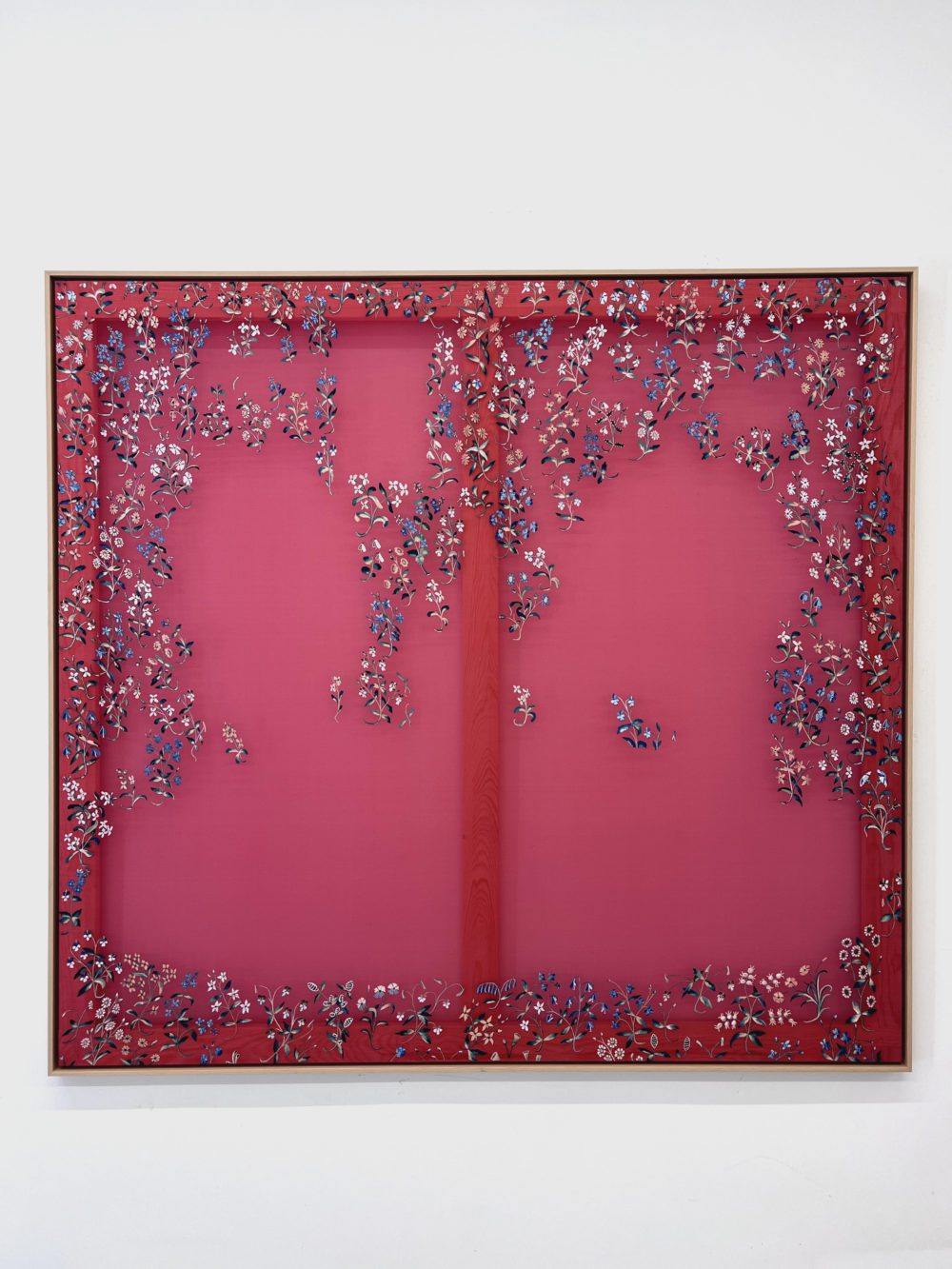 Clara Sánchez Sala. Finalist "40 Premio de Pintura BMW". Centro Cultura Conde Duque
Clara Sánchez Sala. Finalist "40 Premio de Pintura BMW". Centro Cultura Conde DuqueClara Sánchez Sala
La vue, 2025
Maquillaje sobre seda
133 x 163 cm
Sala de exposiciones de Conde Duque, Madrid
20.11.2025 – 01.02.2026
+ info
Projects /
noplace
no place es una plataforma experimental para la exhibición de arte contemporáneo. Se trata de un proyecto impulsado en conjunto por cuatro galerías –Nueveochenta (Colombia), Arróniz (México), Michael Sturm (Alemania) y NF/NIEVES FERNÁNDEZ (España) – con la intención de generarle nuevas experiencias al público a partir de un modelo de producción alternativo.
Operando bajo un sistema colaborativo, en el que las herramientas, los equipos y los recursos de cada miembro están abiertos a los demás, no place supone un esfuerzo colectivo para producir y financiar eventos en los que el foco de atención recaiga completamente en el trabajo de los artistas. En este sentido, se trata de un experimento inédito, con el que las galerías buscan aportar a aquella transformación de la realidad establecida que suelen buscar todos los agentes vinculados al mundo del arte.
Projects /
Conversaciones - Talks

